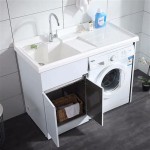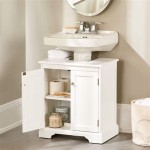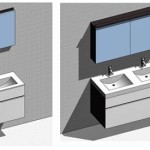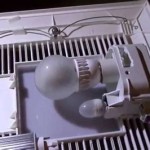Installing a Bathroom Exhaust Fan Without Attic Access: A Comprehensive Guide
A bathroom exhaust fan is an essential component that helps remove moisture and odors, preventing mold and mildew growth. While attic access is ideal for installing an exhaust fan, it's not always feasible in every situation. This guide will provide you with step-by-step instructions on installing a bathroom exhaust fan without attic access, ensuring a safe and effective ventilation system for your bathroom.
Materials Required:
- Bathroom exhaust fan
- Electrical wiring (14-gauge or 12-gauge Romex cable)
- Electrical box
- Wire connectors
- Drywall saw
- Screwdriver
- Drill
- Caulk gun and caulk
Step 1: Determine Fan Location and Cut Hole
Select an appropriate location for the exhaust fan, typically centered on the ceiling. Use a drywall saw to cut a hole slightly larger than the fan housing. Ensure the hole is level and aligns with the location of the electrical wires.
Step 2: Prepare Electrical Wiring
Locate the nearest electrical outlet or junction box and measure the distance to the fan location. Cut the electrical wiring to the required length, leaving some slack for connections. Strip the ends of the wires about 1/2 inch on both sides.
Step 3: Mount Electrical Box
Inside the attic, locate the nearest ceiling joist and mount an electrical box directly above the fan hole. Secure the box firmly using screws.
Step 4: Run Electrical Wires
Feed the electrical wires through the hole in the ceiling and connect them to the electrical box using wire connectors. Ensure proper connections and insulation.
Step 5: Install Exhaust Fan
Slide the exhaust fan housing into the hole in the ceiling and secure it with screws. Connect the fan's electrical wires to the corresponding wires in the electrical box. Insulate all connections and ensure a tight fit.
Step 6: Seal and Caulk Gaps
Apply a bead of caulk around the perimeter of the fan housing where it meets the ceiling. This will seal any gaps and prevent air leaks.
Step 7: Test the Fan
Turn on the power and test the operation of the exhaust fan. Ensure it runs smoothly and effectively removes moisture and odors from the bathroom.
Additional Tips:
Consider installing a humidity-controlled fan that automatically turns on when the humidity level in the bathroom increases.
Use a fan that is rated for the size of your bathroom. The recommended fan size in cubic feet per minute (CFM) is equal to the square footage of the bathroom multiplied by 1.5.
Ensure the exhaust duct is properly vented to the outside through a roof vent or wall vent.
Regularly clean the exhaust fan and replace the filter to maintain optimal performance.
If you encounter any difficulties during this process, it's recommended to consult a qualified electrician for assistance.

How To Install A Bathroom Fan Without Attic Access Atkinson Inspection Services

How To Install A Bathroom Fan Without Attic Access

How To Install Replace Bath Exhaust Fan No Attic Easy Home Mender

How To Vent A Bathroom With No Outside Access

How To Install A Bathroom Fan Without Attic Access Atkinson Inspection Services
How To Install A Bathroom Fan Without Attic Access Quora

How To Install A Bathroom Exhaust Fan Lowe S

Replace A Bathroom Fan In Finished Ceiling It S Husband Thing

5 Reasons Bath Fans Have Such Poor Air Flow Energy Vanguard

Revent 50 Cfm Quick Install Professional Ceiling And Wall Mount Easy Roomside Bathroom Bath Exhaust Fan Rvp50 The Home Depot
Related Posts







